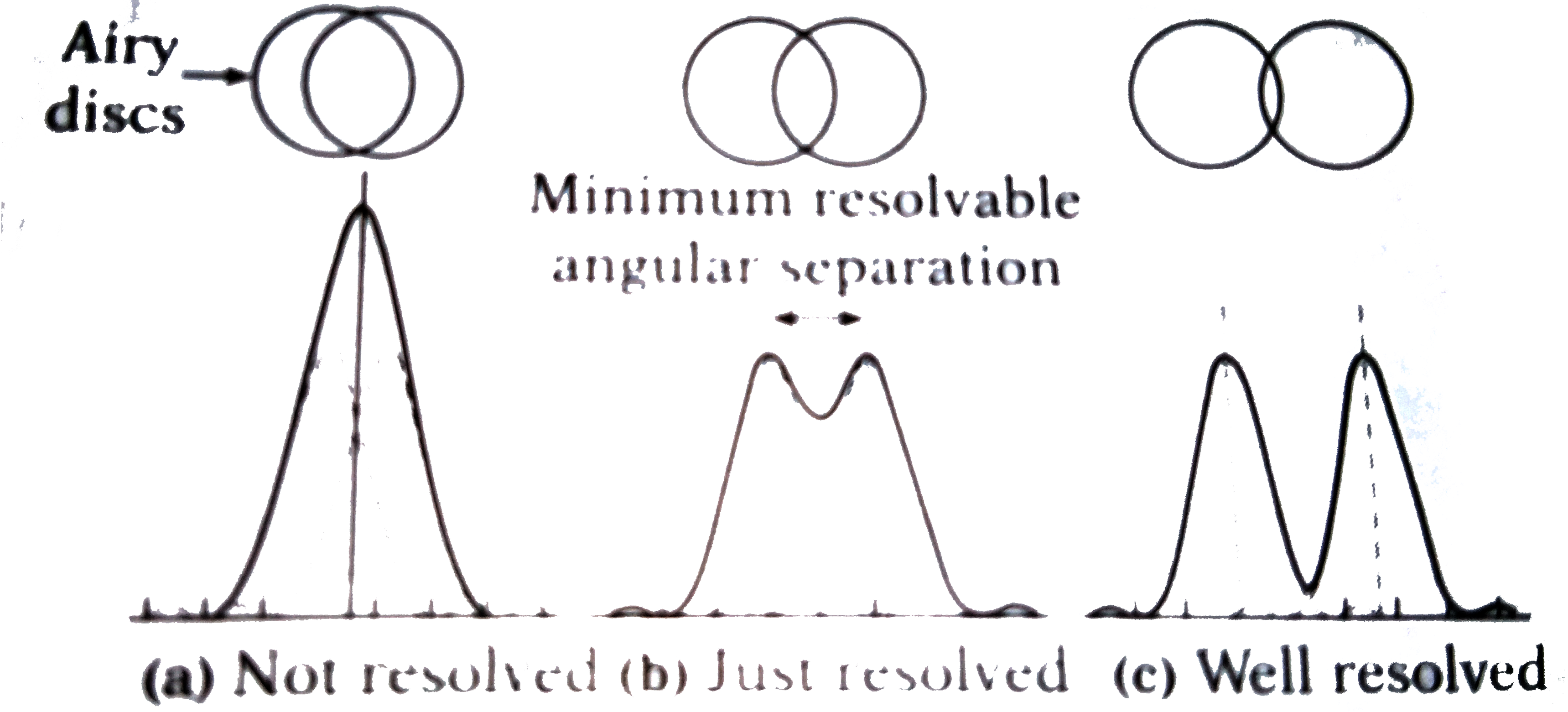The resolving power of a telescope depends on
Video Solution
Text Solution
Rayleigh's criterion for minimum resolution : Two over-lapping diffraction patterns due to two point sources are acceptably (or just) resolved if the centre of the central peak of one diffraction pattern is as far as the first minimum of the other pattern.

The sharpness of the central maximum of a diffraction pattern is measured by the angular separation between the centre of the peak and the first minimum. It gives the minimum resolvable angular separation or the angular limit of resolution.
Two overlapping diffraction patterns due to two point sources are not resolved if the angular separation between the central peaks is less than the minimum resolvable angular separation. They are said to be just separate, at resolved, if the angular separation between the central peaks is equal to the minimum resolvable angular separation. They are said to be well resolved if the angular separation between the central peaks is more than the minimum resolvable angular separation as shown in the figure.
|
Updated on:21/07/2023
Topper's Solved these Questions
- BOOK - NAVNEET PUBLICATION - MAHARASHTRA BOARDCHAPTER - EXPLANATION, CHARACTERISTICS AND PROPERTIES EXERCISE - Electrostatics3videos
EXPLANATION, CHARACTERISTICS AND PROPERTIES
- BOOK - NAVNEET PUBLICATION - MAHARASHTRA BOARDCHAPTER - EXPLANATION, CHARACTERISTICS AND PROPERTIES EXERCISE - Current Electricity1videos
EXPLANATION, CHARACTERISTICS AND PROPERTIES
- BOOK - NAVNEET PUBLICATION - MAHARASHTRA BOARDCHAPTER - EXPLANATION, CHARACTERISTICS AND PROPERTIES EXERCISE - Wave Theory of light3videos
EXPLANATION, CHARACTERISTICS AND PROPERTIES
- BOOK - NAVNEET PUBLICATION - MAHARASHTRA BOARDCHAPTER - EXPERIMENTS AND DIAGRAMSEXERCISE - ATOMS, MOLECULES AND NUCLEI1videos
EXPERIMENTS AND DIAGRAMS
- BOOK - NAVNEET PUBLICATION - MAHARASHTRA BOARDCHAPTER - INSTRUMENTS : CONSTRUCTION AND WORKING EXERCISE - Semiconductors6videos
INSTRUMENTS : CONSTRUCTION AND WORKING
Similar Questions
Knowledge Check
- Question 1 - Select One
The resolving power of a telescope dependeson
Afocal length of eye lenseBlength of the objective lenseClengths of the relescopeDdiamter of the objective lens - Question 2 - Select One
The resolving power of a telescope depends on
Alength of the telescopeBfocal length of an objectiveCdiameter of an objectiveDfocal length of an eyepiece - Question 3 - Select One
A: The resolving power of a telescope decreases on decreasing the aperture of its objective lens.
R: The resolving power of a telescope is given as D1.22λ where D is aperture of the objective and λ is the wavelength of light.AIF both Assertion & Reason are true and the reason is the correct explanation of the assertion, then mark (1).BIf both Assertion & Reason are true but the reason is not the correct explanation of the assertion, then mark(2)CIF Assertion is true statement but Reason is false then mark(3)DIf both Assertion and Reason are false statements, then mark (4)

